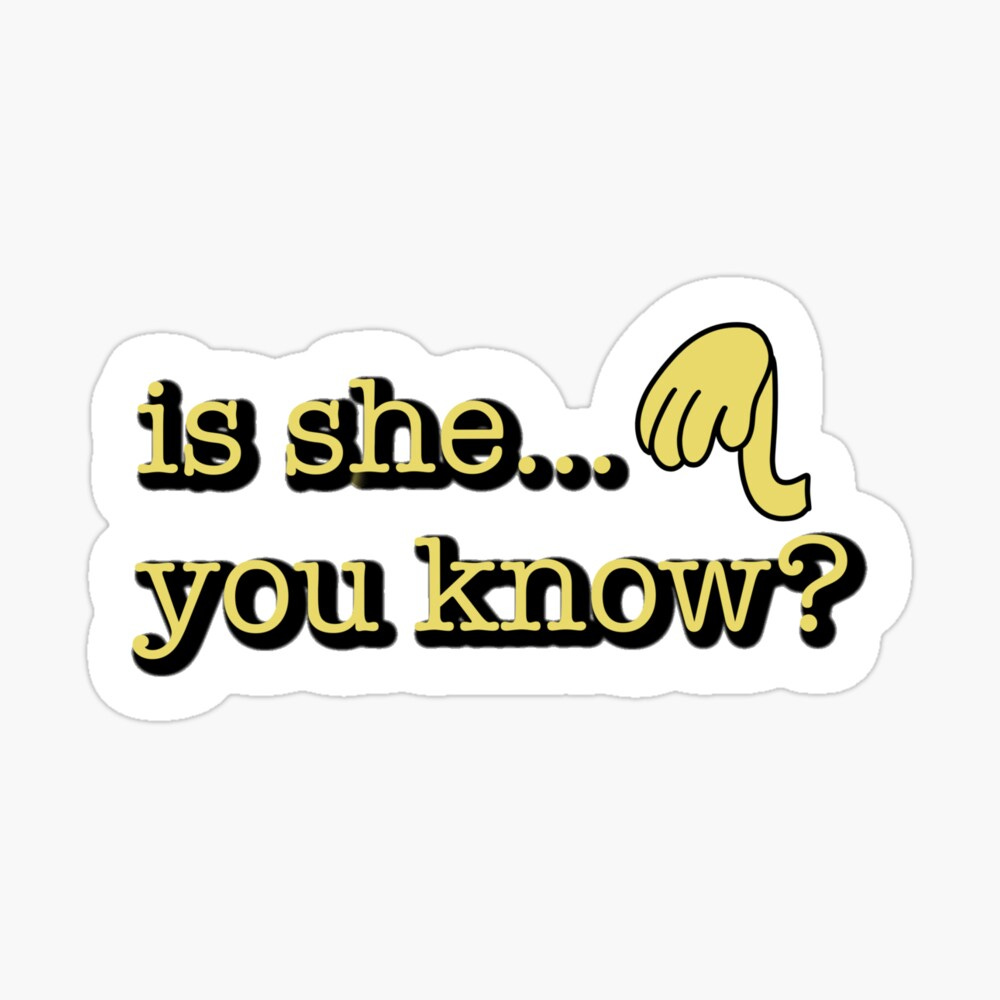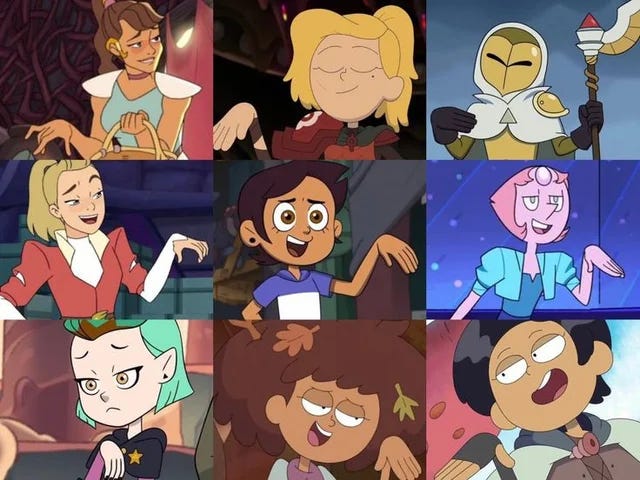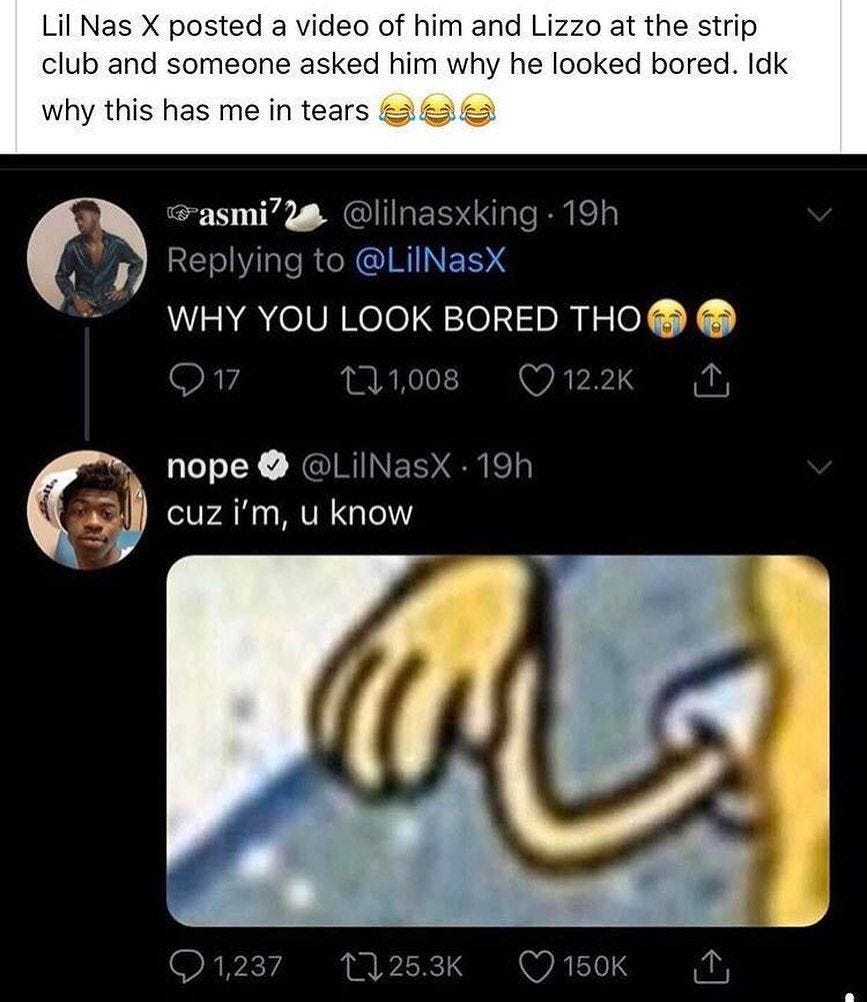Is She.... You Know?
I'll Start My Own Pride Month Discourse Since Everyone Else's is Getting Boring
The language of the LGBTQ community is one that has been crafted through years of careful analysis and clever word play. Some of it is artfully crafted codes to make sure outsiders are none the wiser. Some of it is reclaimed slurs and disparaging phrases. Some of it is nonsense words we repeat until they have meaning and keep repeating until they no longer have meaning. These linguistic practices have interacted over the years to create some of our most cherished phrases; Friend of Dorothy, Queer, and the recent favorite, Is he… you know?.
Is he… you know? Is a famous phrase used by straight people to ask the question on all of our minds. In the phrasing, “you know” can be applied across all predilections of the LGBTQ community. It can also be associated with activities those groups are known to partake in. Does she… shop at home depot? Is he… a fan of Lady Gaga? Do they… drink oat milk? We could truly spend all day thinking of examples and making little jokes, having a grand old time. Of course, because the internet tends to flatten creativity en masse, the most popular and shorthand version is the limp wristed spongebob meme or the nails emoji. Last summer on TikTok, LGBTs would hit the limp wrist when the ding played on SZA’s verse in Kiss Me More. The limp wrist became a necessary part of the phrase and even existed by itself as a general shorthand. I have an issue with this because it marks a failure to understand both historical and modern gender politics. This failure to understand also does a disservice to lesbians and bi women to create distinct and special symbols within our community.
Before I begin citing my grievances with this meme, I want to say something. The gendered language of this piece is both clunky and purposeful. Please bear with me and try to understand I am doing my best to write as cleanly and clearly as possible. I wish I had better words to say what I mean, which is somewhat the point of the entire essay. Sometimes when I say “women” I mean the “people in the queer community who suffer under misogyny.” I know not every lesbian is a woman but I am painting with broad strokes in order to make a point that I know I am overall correct about. I am trying to bridge gaps in understanding between straight people who don’t care about the intricacies of our community, queer people who are trying their best to find their place in a community they are purposely disconnected from, and people so well versed in the language of our community that they helped write it. Obviously all of those people are working with different glossaries. I am not trying to uphold some kind of new gender binary among queer people but I think if we’re going to reclaim the language of our oppressors, we should understand what we’re being oppressed for. Please forgive me for any unnamed exclusion and give me the benefit of the doubt.
The part of Is She… You Know? that bothers me the most is that it was never for us. We (anyone who isn’t a gay man) were never the intended audience for the limp wristed insult or subsequent meme. When gay guys say “gay” they’re never talking about us. When they say gay people they mean them and their friends. When they’re talking about gay women, they say lesbians, even if they mean the longer and more complicated woman loving woman. The platonic ideal when people, both within and outside of the gay community, picture a “gay person”, is a gay man, usually a twink. Probably Frankie Grande, maybe Andy Cohen.
Sometimes this is made explicit through context, and sometimes you just have to know. If people mean gay in the larger most inclusive sense, they will say LGBTQ or something of that ilk. If they want to include gay women, including bi women, they’ll say lesbians, especially in a casual setting. Most people, if they are not actively trying to be inclusive with their language, when they say gay people, mean gay men. For example, in the Buzzfeed article about this very meme, the author uses Gay and LGBT interchangeably to talk about the impact these meme has for the “community”. However, only gay and bi men are quoted or mentioned in the piece. Though this is never said explicitly I, and the others like me, know that there was never any intention or thought of including girls in this piece. I’m not surprised that the words Lesbian, Woman, or Trans (in any iteration), never appear in the piece even though it’s about the “LGBTQ” community. It’s not for us.
It obviously should be different and this is a failure of language on our part but, it is how things work. Moreover it’s crucial context for understanding how the gay community functions, especially online. People tend to be careful with their language when making larger points about sexuality and gender or appeals to political leaders, but among friends we use language in a way that is inexact. The technical definitions and the slang definitions could not be further apart. Most people on twitter, although it is a public forum, tend to only speak in slang. When we tweet from our public accounts, we’re sitting in the world's largest living room, telling our friends what we’re thinking. It’s not a party, it’s not a performance, it’s a saturday afternoon before the pregame starts. A time reserved for Besties.
The failure to read between the lines and not see the actual meaning of the words being used, rather than the assumed meaning of the words being used, is a larger problem on the internet. This is how we get a lot of widespread misuse of AAVE and the popularity of the term “doll” being used to describe cis gay men and cis straight women when it was an in-community term for trans women. This is a larger problem on the internet that there’s kind of not a perfect solution for because there will always be idiots. So far the internet seems to be mostly populated with them, rather than smart people.
Beyond the miscommunication of language, which can be hard to decipher and is forgivable on a certain level; Those aren’t our stereotypes. There are many frustrating parts of being gay and the access to community that it does or does not grant you, but one of the worst parts is that most of us have to be self taught. If one does not have an IRL gay community, they must search for one online. If there is no one in their lives to teach them, they must make their own curriculum. Many people miss out on the basics some of us think of as second nature. If you don’t know, here's some gender studies 101 to explain what makes the limp wristed joke funny for men and par for the course for women.
Men are expected to be masculine and women are expected to be feminine. Gay men are seen as less masculine and therefore feminine. In the world of straight people, there are only two options and if you’re not one, you’re the other. We may see it differently but they don’t. The way straight people attack and make fun of gay men is saying they act feminine. They have unique words for the way these men act, mincing effeminate, limp wristed. Though these words were originally and can still be used to describe women, I’ve only ever heard them used to describe gay men and it was always derogatory. When these words are used to describe women, it is seen as a positive descriptive of their gender. Or, if not exactly positive, inherent. It is not a deviation from the norm, or queer, for a woman to mince.
The words that are used to describe gay women in a derogatory way are about their closeness to masculinity. If you are a cis lesbian, you are not punished for your femininity the way a gay a man is. You are punished for your femininity the way a straight woman is. Being limp wristed as a woman is inherent to being a woman. It is not inherent to being a gay woman. The way a gay man is hated for his femininity is not the same way a woman can be hated for her femininity. More often the opposite is true. When women are hated for their queerness, they are often hated for their masculinity.
So now that we have that out of the way, let's get to the brass tacks of this. We need to stop using the limp wrist as a universal symbol of gayness because it violates my two principles. A woman should know when she’s not wanted and all I want is my fair share. I get it, the gay guys are more fun than we are. They’re funnier, they throw better parties, they make better music. There’s a reason they’ve been able to dominate the public eye for so long as the main speakers for the LGBTQ community. (And all the systemic stuff too). But I think if we give it our all and understand our community better, we could carve out a unique place for us in memes and on twitter. Understand the bones of what makes being a gay woman funny beyond what gay men tell us makes gay men funny and pretending it makes sense for us as well. They don’t have to dictate the culture anymore. They wouldn’t be seen as the arbiters of taste and humor, if we didn’t let them speak for us. We also need to stop being so accepting of corporate lesbian marketing but that’s a different essay.
Dykes can be funny. Ellen, for example. Me, just now, saying that Ellen is funny. We can also be funny online about our own sexualities and communities. When famous homophobe XXXtentacion died, we got “The dykes outlived” trending on twitter, which makes me laugh to this day. And if we want an old fashioned way to ask if a woman is gay, instead of making an overly dramatic limp wrist, you can pretend to hammer something. It’s cute, it’s silly, and it gets the job done. Which, at the end of the day, isn’t that what all lesbians are interested in? Getting the job done and making sure everything is up to code.







Loving Memeforum pride month
Thank you for the insightful article Kathryn!